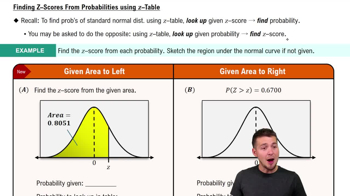Assume the machine shifts and the distribution of the amount of the compound added now has a mean of 9.96 milligrams and a standard deviation of 0.05 milligram. You select one vial and determine how much of the compound was added.
b. You randomly select 15 vials. What is the probability that you select at least one vial that is within the acceptable range?






